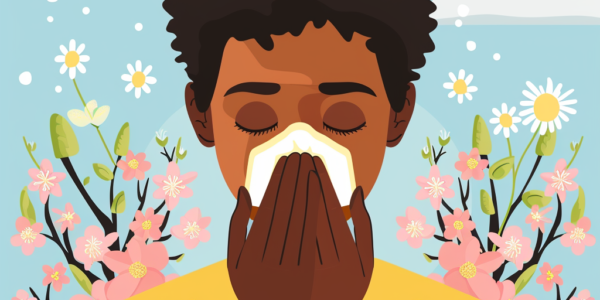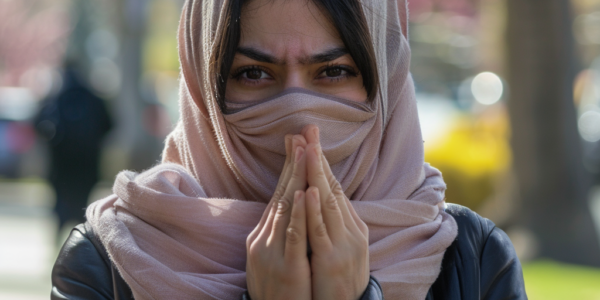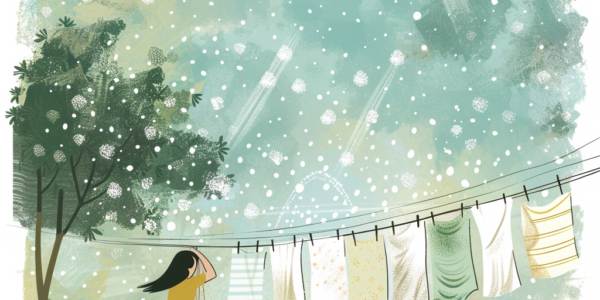The Impact of Pollen on Allergies and Agriculture
Learn about the impact of pollen on seasonal allergies and the environment. With climate change increasing pollen levels, scientists predict more intense allergy seasons. Discover how bees play a crucial role in pollination, contributing significantly to the food we consume. Find out about the staggering numbers surrounding pollen production and the projected growth of the allergy treatment industry. Understand the vital role bees play in agriculture and sustaining life on our planet.
Best allergy products to make it through spring
Invest in some of the internet’s most popular allergy products to survive allergy season with ease. Learn about the best products, including SureGuard Pillow Protectors, NeilMed Sinus Rinse Kit, and LivePure Anti-Allergen Fabric Spray.
Climate Crisis: Are Symptoms Due to Allergies or a Cold?
As the climate crisis continues to affect the environment, the question of whether symptoms are due to seasonal allergies or a common cold becomes increasingly relevant. With the lengthening and intensifying of allergy seasons, it can be challenging to differentiate between a runny nose caused by pollen or a virus. The emergence of greenery in spring brings with it an increase in allergens, leading to confusion for many individuals. Dr. Jesse Bracamonte, a family physician with Mayo Clinic Family Medicine, points out that both allergies and colds present similar symptoms such as nasal stuffiness, a runny nose, and sneezing, making it easy for people to mistake one for the other. With rising global temperatures, allergy seasons have extended, and pollen concentration has increased significantly over the years. For instance, in the US, the pollen season has grown by 20 days, while pollen concentration has surged by 21% between 1990 and 2018. Similarly, the UK’s Health Security Agency (UKHSA) warns that pollen allergy season, traditionally starting around March, may now commence as early as January or February. To help individuals distinguish between seasonal allergies and a cold, we consulted experts to provide insights into the two conditions. Seasonal allergies, also known as hay fever or seasonal allergic rhinitis, occur when the body’s immune system overreacts to perceived harmful substances. These allergies affect approximately one-quarter of adults in the US and the UK, with symptoms peaking during seasonal changes when plants release pollens that trigger sensitive immune systems. Dr. Neeta Ogden, director of the Allergy, Asthma and Sinus Center in Edison, New Jersey, and spokesperson for the Asthma and Allergy Foundation of America, notes that tree pollen is the primary allergen in spring. The symptoms of seasonal allergies include sneezing, runny nose, itchy eyes, and congestion. On the other hand, a cold is caused by a viral infection and may present with similar symptoms, making it difficult to differentiate from seasonal allergies.
Warmer Weather in Canada Causing Allergy Symptoms to Flare Up Earlier and Worsen
Warmer-than-usual weather in Canada is causing allergy symptoms to flare up earlier than normal or get worse for some allergy sufferers. Climate change and El Nino have contributed to the warmer winter temperatures, leading to longer and more severe allergy seasons. Canadians are noticing the change, with allergy symptoms lasting longer and becoming more severe. As climate change continues to impact weather patterns, it’s essential for individuals to adapt and find effective ways to manage their allergies throughout the year.
UK Braces for Early ‘Pollen Bomb’ Causing Concern for Hayfever Sufferers
With the UK facing an early ‘pollen bomb’ and hayfever sufferers on the rise, it’s crucial to take steps to protect against allergens. Experts recommend avoiding hanging washing outside and showering immediately upon returning home to prevent pollen from spreading indoors.





